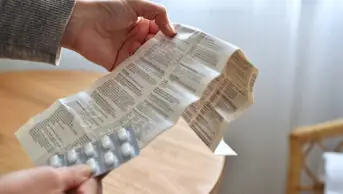
Shutterstock
Asthma inhalers being produced in an “increasing array” of colours is unsafe and could put patients lives at risk, say researchers, who have called for an official colour-coding system to avoid confusion.
Results of a survey carried out by members of the UK Inhaler Group (UKIG) show that the majority of respondents, including healthcare professionals and patients, said they referred to short-acting β2-agonist inhalers, which are used for the relief of symptoms, as the “blue inhaler”.
Of the 2,127 patients questioned, 11.3% said they never refer to the colour of their inhaler, while 0.9% of the 600 healthcare professionals questioned — including GPs, nurses, and pharmacists — said they never referred to inhalers by colour.
However, 86.8% of the healthcare professionals said they ‘usually’ or ‘often’ described inhalers by their colour when talking to patients.
But, reporting in Primary Care Respiratory Medicine
[1]
(online, 3 November 2016), the study authors say the colour coding of inhalers is no longer consistent, and point out that in the past two years, two inhalers with significant amounts of blue colouring were licensed in the UK but neither was for the emergency relief of symptoms.
One of those was GlaxoSmithKline’s Relvar Ellipta (fluticasone furoate/vilanterol) inhaler, the colouring of which was changed from blue to yellow after lobbying from patients and professional organisations over safety concerns.
“An increasing array of colours is now being used by pharmaceutical companies to differentiate the treatments within their own product range, rather than demonstrating any conformity to specific colour conventions,” the researchers write.
Lead author Monica Fletcher, chair of the UKIG and chief executive of UK charity Education for Health, says: “With a range of inhalers and new treatments available, it is vitally important for not only patients but their families and carers, such as school teachers, to know which one to use in an emergency.”
She says that an industry-wide approach to colour coding is needed to ensure it cannot be possible for a blue inhaler to obtain a licence unless it is a reliever and that inhalers that are not for rapid symptom relief should not be licensed if they are blue.
Duncan Keeley, a GP in Thame, Oxfordshire, and policy lead for the Primary Care Respiratory Society UK, agrees that safety is the priority. “In a real emergency, when someone is struggling for breath, it is important that there is no room for confusion about which inhaler will have a rapid effect to relieve symptoms.”
Similarly, Sonia Munde, clinical nurse manager at Asthma UK and head of the charity’s telephone helpline, echoes the views of the researchers and says the term “blue inhaler” has been synonymous with the reliever inhaler for years.
“It is so important to have consistent, simple health messaging between people with asthma, their carers and healthcare professionals.
“This is particularly the case during a life-threatening asthma attack when clear coherent instructions can save lives,” she adds.
A spokesperson for the Medicines and Healthcare products Regulatory Agency (MHRA), which regulates medicines and medical devices in the UK, says it plans to meet with members of UKIG to discuss their proposals.
However, Sunayana Shah, head of regulatory and safety policy at the Association of the British Pharmaceutical Industry (ABPI), a trade association of companies in the UK that produce prescription medicines, says that while the ABPI encouraged all members to follow the MHRA’s best practice on labelling and packaging, a standardised approach would not be practical.
“The manufacturing of inhalers includes many suppliers and partners across the world, and with different rules and regulations set by international regulators, it wouldn’t be feasible to expect a single set of standards.”
References
[1] Fletcher M, Scullion J, White J et al. Is the ‘blue’ colour convention for inhaled reliever medications important? A UK-based survey of healthcare professionals and patients with airways disease. Primary Care Respiratory Medicine. 2016. doi: 10.1038/npjpcrm.2016.81

Asthma inhalers being produced in an “increasing array” of colours is unsafe and could put patients lives at risk, say researchers, who have called for an official colour-coding system to avoid confusion.
Source: Shutterstock
Members of the UK Inhaler Group are calling for a industry-wide approach to inhaler colour coordination to avoid confusion among patients
You may also be interested in

GPhC writes to pharmacy teams after methotrexate dispensed with instruction to take once daily

Medicines commission calls for greater clarity on risk of suicidal behaviour from antidepressants
